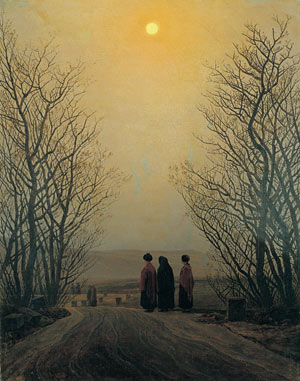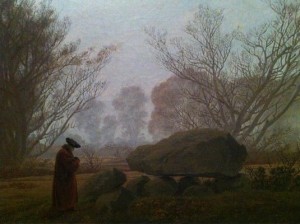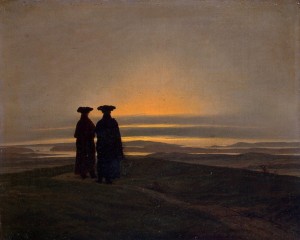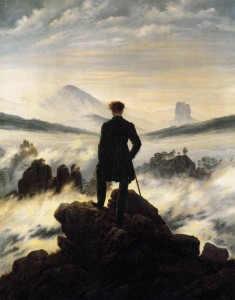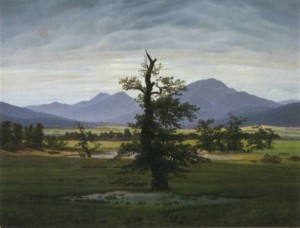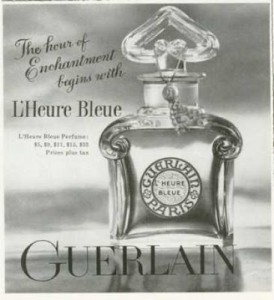Ostermorgen/ Easter Morning
Winter is over and the first signs of spring have been greeting us, the snowdrops and winter aconites erupt everywhere, and the birds sing happily in the morning. However, bear with me, for one last time this year, while I look at winter from another perspective, and tell the story of two masterpieces.
The other night I went to a performance of Schubert’s Winterreise (Winter’s Journey). It was a very special performance since firstly; it was performed by very dear friends, and secondly, it was a staged version, created with a view to make people (re-) discover the contemporaneity of this deep and complex masterpiece through an added visual dramatic side.
Spaziergang in der Abenddämmerung/ Walk at dusk
This romantic cycle of songs with piano accompaniment is a journey through the inner winter of the soul; a man who has been thwarted by his love sets out on a restless journey towards his death. The unification of Wilhelm Müller’s poetry and Schubert’s immortal music is at the same time bleak and utterly beautiful.
”Frozen drops fall
from my cheeks:
Did I, then, not notice,
I have been weeping?
O tears, my tears,
are you so tepid,
That you turn to ice
like cool morning dew?
Yet you spring from a source,
my breast, with such fierce heat,
As if you would melt
all of the ice of winter!”
-Gefror'ne Thränen
Sonnenuntergang/ Sunset
I have always viewed this music as very modern, but some way through the performance, I was struck by the fact of how old and yet utterly relevant this music was, at the most modern part of the work, I couldn’t stop wondering how this would have been received back in Schubert’s days, in an intimate salon amongst friends, Schubert himself at the piano. I felt transported. Felt like I was time warped into that Biedermeier living room, and in the most fascinating way I heard the music as gripping and new, as well as vintage.
Wanderer über dem Nebelmeer/ The Wanderer above the sea of fog
Spellbound by the performance on stage, and by the bridging of my perception of time, my perfume interacted; it was the melancholic smell of iris, powdered heliotrope and anise seed, the softly spoken floral heart, a sensation of the fragrance, much like the music, having just been given new life; the songs and the scent became part of the same scenario. It was the perfect scent-track, the twilight introspective mood mirrored by the romantic wayfarer’s final journey; in that sublime way that only scent can do it, in an instant. If you haven’t already guessed, my scented companion was of course L’Heure Bleue.
Not that the bleakness of the tormented soul of the wanderer in Winterreise is what spells out L’Heure Bleue to me, but rather the melancholia that takes hold of the listener, the onlooker of the journey. It allows for that special sentiment when you need to satisfy the pleasure of dwelling in sorrows, past or present.
“Every stream finds the sea,
Every sorrow finds its grave.”
Dorflandschaft bei Morgenbeleuchtung/ Village Landscape in Morning light
At the performance I felt part of a journey, not just the passage which the character of the piece goes through, but the musical journey, which has been a heritage passed down to us from generation to generation. I felt Schubert staring straight at me through the music, like a genie out of a bottle. And that was too how I felt about the perfume I was wafting, past and present in one. It was both the fragrance created 100 years ago, and it wasn’t. The ingredients would have smelt different, the formulation has been altered, the same way that the piano would not have been the Grand Piano sound we are used to, and we have no idea how Schubert himself or the singer Vogel might have performed that first sitting room Winterreise, and yet, both masterpieces are still here with us. They are alive, and will hopefully stay so for many more years to come in all their different incarnations.
Schubert’s Winterreise is from 1828, and Jacques Guerlain’s milestone L’Heure Bleue will this year become a centenarian, so historically they are nowhere near contemporaries. I did not choose L’Heure Bleue on purpose, but it turned out to be the ideal companion through this musical journey of lost love and a heart in winter. Luck has he who is not touched by the pain of these epochal masterpieces.
And with these final words I want to go out into the awakening spring but not before I’ve invited all readers out there to re-discover their personal favourite masterpieces- everyday
–Jasia Julia Nielson, Contributor
All art is by Caspar David Friedrich (1774-1840) who was a contemporary of Franz Joseph Schubert

